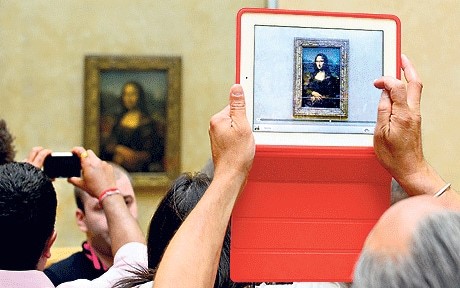By Nikolas Brocklehurst, Exhibitions and Collection Technician
Here at Wellington Museum we have put together the Future Museum Group as part of the ongoing development. As the name suggests we are asking some big questions. Now this post does not have any startling revelations rather it just raises some of the questions, ideas and considerations about museums that the group have been discussing.
It has been argued that by providing opportunities to establish, build and to rebuild traditions, it is culture’s temporary and transitory nature that empowers it. Conversely for a culture that does not acknowledge and embrace this nature it becomes unable to be questioned or challenged and fatally unable to evolve.
Museums are no exception. Despite their ability to bring together objects from all periods of history, they are cultural products firmly anchored in the time that created them. So for museums not to consider their own nature is to be unchangeable.
Now if this were the case, I would not be writing this and there definitely would not be a Future Museum Group. Despite being firmly encased in their architectural statements, museums have had to address their histories, to build and to rebuild themselves, to shift their focus, their purpose and broaden their public appeal (more or less). This is a continual process and failure to do so leads to extinction.

So, how does a museum, a thing with less than humble beginnings (see The Same but Different for a little history) have relevancy in contemporary life awash with alternatives?
Shifts to edutainment, blockbuster exhibitions, spectacles and indeed diversifying what actually happens in and about museums (films, concerts, light displays etc.) can be seen as a response to this question. Equally, museums are faced with an increasing need for profitability against rising costs while being prepared for any future social, economic and environmental disruptions.
And yet, is anything at stake when museums position themselves as one-stop shops, with cafes, movies, retail spaces, kids areas, so on and so forth, evoking something very reminiscent to a mall?
Or is the move to more diverse undertakings and events an attempt to break free of the museum’s dry and stuffy persona? Does embracing singular, unique, one-off moments counter the typically static displays of singular, unique, one-off objects? Further, can it be understood as a means to stand out from the immediacy, simultaneity and ubiquity offered by our increasingly digitally mediated world? A world where notions of originality are easily reproducible.

Is this a move to personal and personalised experiences as tools for re-securing museums within a cultural psyche? And yet fundamentally this shift is competing with the alternatives in their terms. So the question remains, what is it that 21st century museums can offer that is not offered elsewhere?
At one level they do have a role in telling contested stories but what tends to differentiate museums from other institutions are their collections – they are repositories and archives of culture. However, this is not as clear-cut as it appears.

Yes, museums are full of objects but there is a fundamental shift in the meaning and operation of those objects once they enter the museum’s doors. The very notion of being ‘worthy’ of collecting distinguishes the unique and the special from the common and the ordinary. Discarding their previous uses, they are no longer potato peelers or paintings but become embodiments of history, witnesses to events, and examples of genius. Is it this, the museum’s ability to make the ordinary extraordinary, to make an object worth looking at, the element that truly separates museums from other institutions, and by extension the one thing that museums alone can offer?
But not all objects can be given their own plinth, label and spotlight. Online collections can and do alleviate some of this, but it is not the same as being on public display within the institution itself. There is a certain prestige attached to those viewed in situ while an invisible majority remain confined to store houses indefinitely.

Decisions must be made as to what can and cannot go on display. More so, not all objects are empowered by their ‘incarceration’ within museums and their mode of ‘exhibition’. This indeed is a practice museums have had difficulty with.

Bringing it back to the Future Museum Group, we have asked who better to take the lead on displaying culture than the culture or community itself. So we are pushing a community museum focus and Flux is an aspect of this. The Future Museum Group is utilising a range of engagement strategies aiming toward empowerment and the Museum offers the one thing it can – the full weight of its social and cultural capital for all to use.
As stated in the beginning, nothing is new here, there are no great revelations, just a few things that we have been considering.


Leave a comment